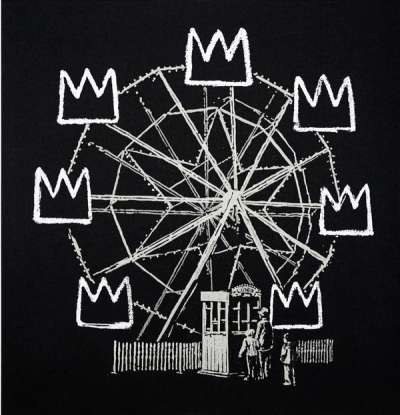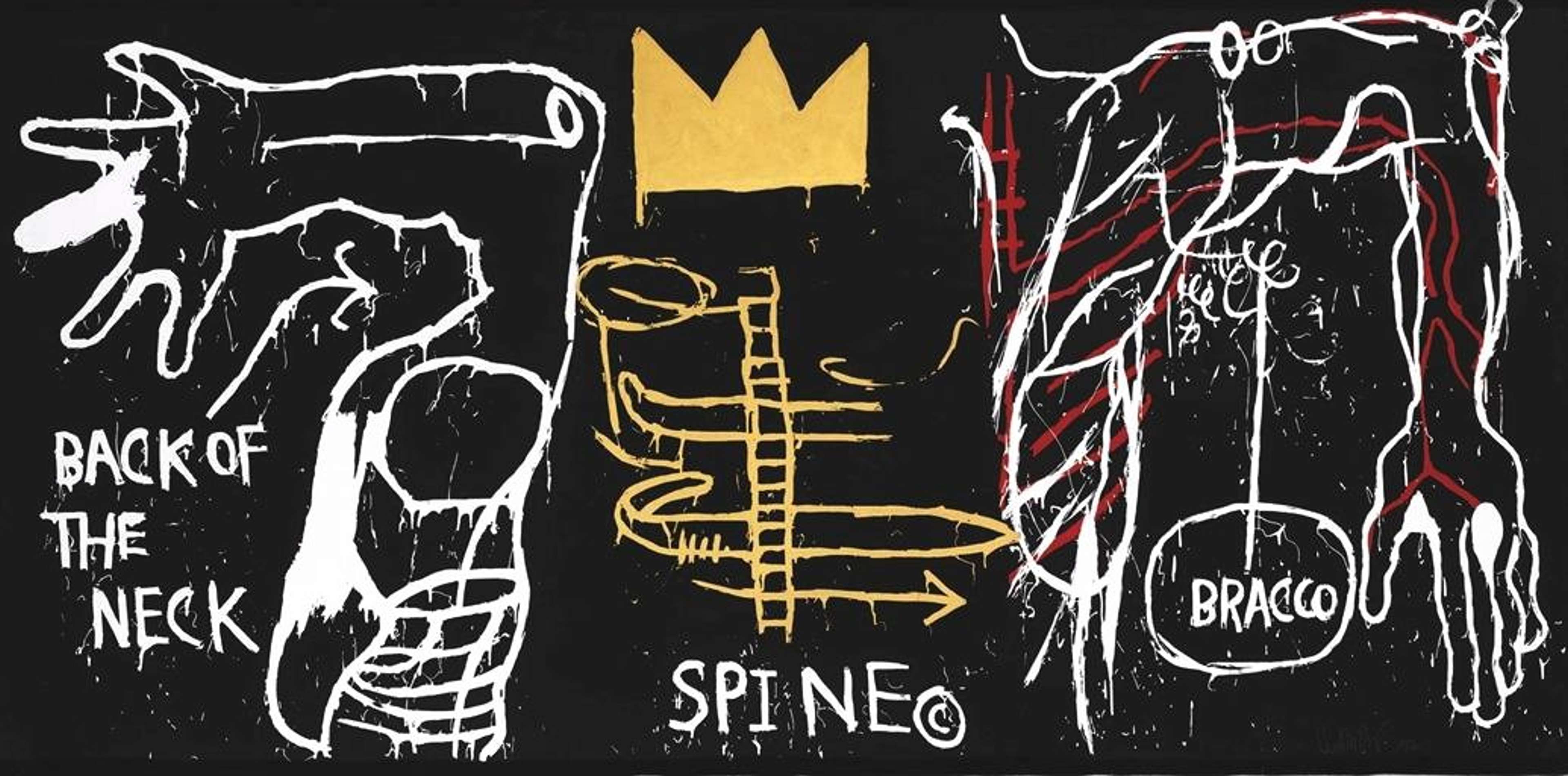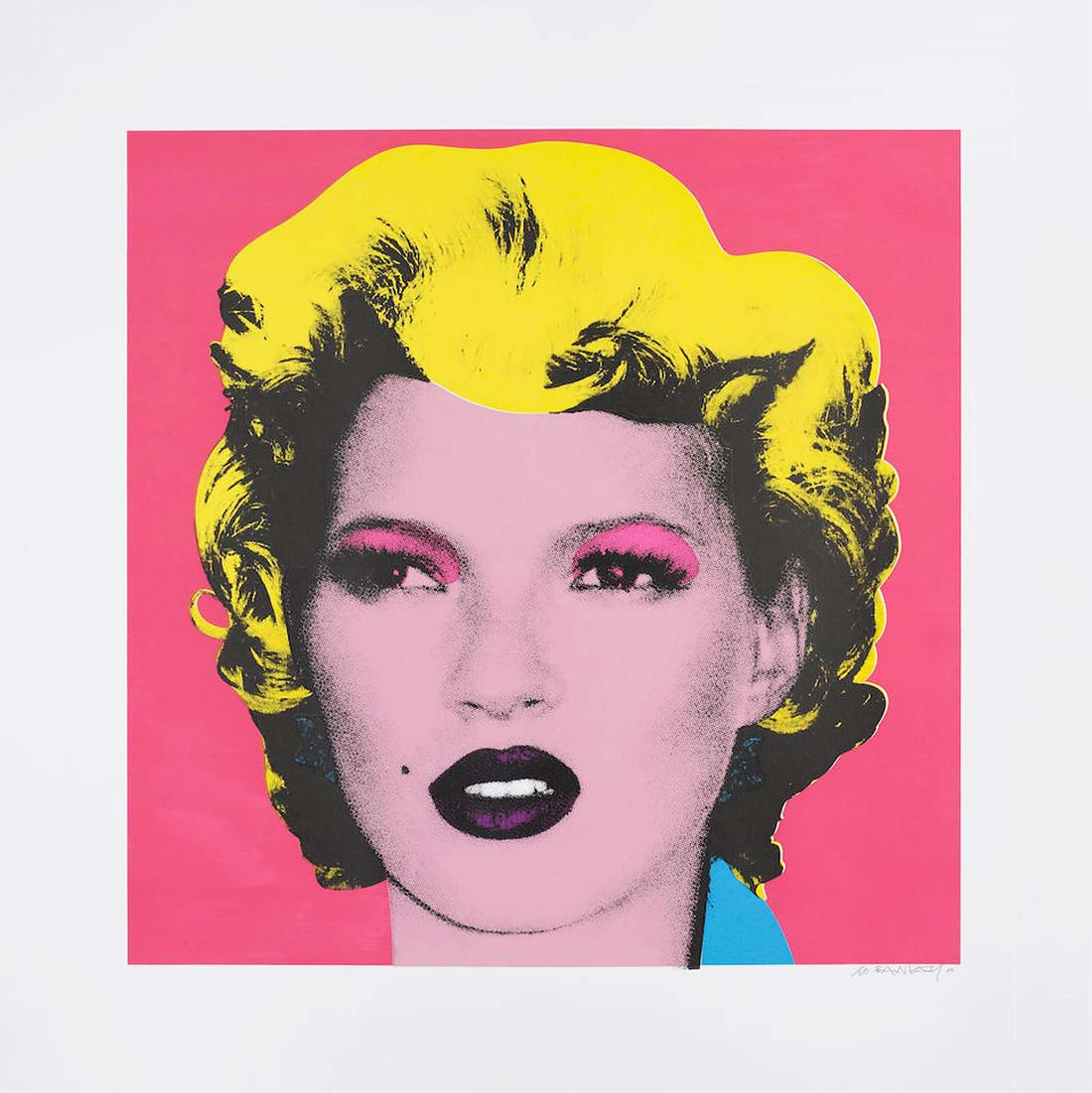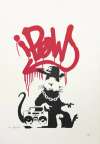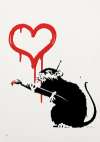Banksquiat
Banksy's street art is accessible and democratic; Banksquiat pays homage to one of street art's most famous names, Jean-Michel Basquiat. By reusing the motifs of another street artist, Banksy reminds us that street art is constantly evolving, with new artists adding to and erasing existing artwork in a competitive and democratic arena.
Banksy Banksquiat For sale
Banksquiat Value (5 Years)
With £270727 in the past 12 months, Banksy's Banksquiat series is one of the most actively traded in the market. Prices have varied significantly – from £30000 to £131040 – driven by fluctuations in factors like condition, provenance, and market timing. Over the past 12 months, the average selling price was £33840, with an average annual growth rate of -17.29% across the series.
Banksquiat Market value
Auction Results
| Artwork | Auction Date | Auction House | Return to Seller | Hammer Price | Buyer Paid |
|---|---|---|---|---|---|
 Banksquiat (grey) Banksy Signed Print | 27 Nov 2025 | Koller Zurich | £29,750 | £35,000 | £45,000 |
 Banksquiat (black) Banksy Signed Print | 25 May 2025 | SBI Art Auction | £34,000 | £40,000 | £45,000 |
Sell Your Art
with Us
with Us
Join Our Network of Collectors. Buy, Sell and Track Demand
Meaning & Analysis
Banksquiat presents a striking union between two of the biggest names in Street & Urban Art past and present: Jean-Michel Basquiat and Banksy. The monochromatic work depicts a family queuing to board a ferris wheel, the carriages of which are replaced with Basquiat's iconic crown motif. The work is an homage not only to Basquiat but also to the democratic art of graffiti itself, which Banksy sees as threatened by capitalism and consumerism.
Throughout his elusive career, Banksy has always been keen to acknowledge his predecessors in Street Art. Made popular in the 1980s by the likes of Basquiat and Keith Haring, these young mavericks of Pop Art took to the streets to bring their art to the masses. Their ethos had a clear and profound influence on Banksy, as we see in his reference to Haring in Choose Your Weapon, and to Basquiat in this series. In fact, the monochromatic style of Banksquiat might be interpreted as an ode to Haring's early Subway Drawings, executed in chalk on the New York subway. This is also not the first time Banksy has paid homage to Basquiat. Back in 2017, Banksy sprayed two murals outside the Barbican centre, where a retrospective exhibition of Basquiat's work was being held.
As much as Banksquiat champions the history of Street Art, it also satirises the commodification of it. Basquait's work, much like Haring's, Andy Warhol's and Banksy's, has been used for countless commercial campaigns. His artwork has been stripped of its meaning, plastered on consumer products, and sold to make profits that were never intended by the artist. It is his opposition to this commodification of art which forms the linchpin of Banksy's work. The Basquiat crown ferris wheel seems to represent the relentless cycle of capitalism and consumerism. Originally sold on Banksy's pop-up online store, Gross Domestic Product, Banksquiat was described as a work "in which Banksy is cleverly questioning the relentless commodification of Basquiat in recent time - by crassly adding to the relentless commodification of Basquiat in recent times."
Banksquiat is, therefore, yet another of Banksy's tongue-in-cheek critiques of the art world and its bourgeois institutions. Indeed, it is ironic that the two Banksquiat works were sold on GDP for £500 a piece, but the series proves our persistent obsession with iconic artwork as an object rather than 'Art'.
